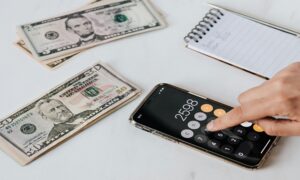In today’s predominantly digital world, implementing a unique handwritten signature stands out by adding personality and human connection. Your distinctive signature can validate important documents, sign off creative works, or provide a quick shorthand among friends. This comprehensive guide covers key strategies for developing, perfecting, and digitizing a stylish, authentic signature catered to your specific needs and style.
Defining Your Signature’s Purpose and Frequency of Use
Before designing your signature, carefully consider how and how often you will need to employ it. Assess:
- What types of documents will need your signature for official validation – legal contracts, artwork, casual social communications? Prioritize legibility for formal agreements requiring clear identification.
- Will you exclusively handwrite it or also require a digital version for electronic documents and contracts? Digital usage necessitates clean, simple lines and shapes that reproduce well electronically.
- How often will you need to sign your full formal name versus quick informal notes or tags? Length considerations impact signing convenience and practicality for frequent use.
- Do you envision an elegant calligraphy showcase or simple initials for regular everyday use? Complexity levels determine the time and concentrated effort each signature requires for handsome execution.
These considerations help guide optimal signature style, complexity, and digitization needs towards your real-world applications. After reading this guide you will find all answers about how to create a handwritten signature.
Incorporating Personality Through Customization
Beyond purely practical use determinations, your signature also represents personal identity and allows creative expression. Strategically integrate original custom elements that resonate with your individuality, interests, and professional field.
For example, ardent hikers could incorporate outdoor symbols like mountain peaks or trails; bookworms may accent letters with quill nibs; medical professionals often integrate caduceus imagery while finance roles may add dollar signs.
Even subtle hearts, stars, or ocean waves become distinctive and identifiable design touches. Such thoughtful personalization makes signatures directly reflective of owners’ passions and personalities.
Mastering Digital Recreation
To enable utilizing signatures electronically across digital documents and platforms, carefully transform completed models into versatile digital formats.
Useful techniques include vector conversions enabling flawless resizing, maximizing photographic resolution through optimal camera distance and angles, and employing dedicated signature apps providing user-friendly creation tools.
Enable multi-layered identity protection when storing signature files online or electronically by requiring robust authentication.
Building Muscle Memory Through Extensive Practice
With style and digital aspects addressed, physically mastering a signature’s unique strokes and flourishes requires rigorous repeated practice across multiple sittings. Focus on:
- Perfect timing and coordination when linking consecutive strokes
- Maintaining consistent positioning of ascenders and descenders
- Achieving uniform letter height, width, and spacing across the full signature
Additionally, relax hands and remain aware of posture constraints introducing unnecessary wrist tension or amplitude limitations.
Now equipped with customized, practical signatures primed for digital platforms, demonstrate your brand anywhere requiring validation, ingenuity, or just an extra personal touch!
Key Elements to Consider
When deciding the right signature for your needs, keep these key considerations in mind:
Legibility
While signatures allow artistic freedom, and ensure baseline legibility for signing legal documents or correspondence. Obscure flourishes can cloud critical identification details. Prioritize clarity in letter shapes.
Length
Length impacts signing practicality. Full names with middle initials offer formality while one-initial signatures provide quick signing convenience. Evaluate your most common signing scenarios to determine the ideal length.
Complexity
Intricate lettering like calligraphy requires more signing time versus simple print-style signatures. Again, assess typical contexts to choose suitable complexity. Complex fonts suit display purposes while clean, readable styles work for bulk signing.
Selecting Your Signature Style
With key elements decided, now choose a signature style. Popular options include:
Full Name Signatures
Full first and last names lend an official quality. Experiment with stylizing capital letters with exaggerated loops or lines. This allows recognizability without totally obscuring individual letter shapes.
Initials Signatures
Initial signatures featuring the first letters of your full name provide versatility. You can design two or three condensed, interconnected initials, making your mark without occupying extensive space.
Display Signatures
These artistic signatures incorporate custom calligraphy, hand-lettering, monograms, symbols, and other creative touches. Modern display signatures often integrate both scripts and prints for stylistic duality. This approach suits profiles, artwork, or documents where readability isn’t critical.
Crafting Signature Letterforms
When ready to start designing letterforms, utilize these expert tips:
Master Proper Stroke Techniques
Practice core strokes like diagonals, descending lines, ovals, and counters inside letters. Correct stroke order, direction, and linking create unified, proportional letterforms.
Determine Signature Proportions
Decide optimal letter height-width ratios along with spacing between letters and words. Maintaining consistency improves legibility and balance across the entire signature.
Reference Inspirational Samples
Study other signatures incorporating styles you wish to emulate like calligraphy, monograms, glyphs, or custom fonts. Analyze what aspects impart uniqueness to integrate into your own design.
Iterate with Sketches and Models
Brainstorm multiple signature variations focused on fonts, flourishes, arrangements, and proportions. Evaluate what works and refine the most promising options into final models.
Perfecting Your Signature
With preliminary models ready, now refine your chosen design through:
Repeated Signing Practice
Sign your name slowly, using full forearm strokes rather than just wrist flicks. The repetitive practice builds muscle memory for smooth, accurate rendering.
Analyzing and Refining Details
Critically evaluate each practice run, pinpointing uneven sections needing improvement. Consciously modify problematic parts like inconsistent letter heights or disconnected strokes.
Adjusting Grips and Body Posture
A tensed grip or hunched posture hinders fluid signing. Evaluate and tweak hand positioning, paper angles, seating arrangements, and other ergonomic factors enabling unconstrained movement.
Finalizing a Digital Signature Version
To utilize your signature electronically for contracts or online documents, create a digital replica:
Take a Clear Photograph
Capture your completed signature on high-resolution camera mode, filling the frame and converting to black-and-white for crisp definition.
Create a Vector Graphic
Use Illustrator or other vector programs to trace over scanned signature photos cleanly. The vector format allows scaling signatures cleanly to any size.
Try Specialized Apps and Tools
Websites like SignNow transforms physical signatures into digital files with image editing and vector conversion capabilities tailored for signatures.
Secure It Against Misuse
Store signature files only on personal, encrypted devices to prevent theft. Watermark digital copies and enable multifactor authentication for online signature platforms.
By weighing key considerations, exploring style options, refining letterforms, and finalizing complementary digital versions, individuals can craft customized handwritten signatures that provide intrigue and credibility wherever applied.



































